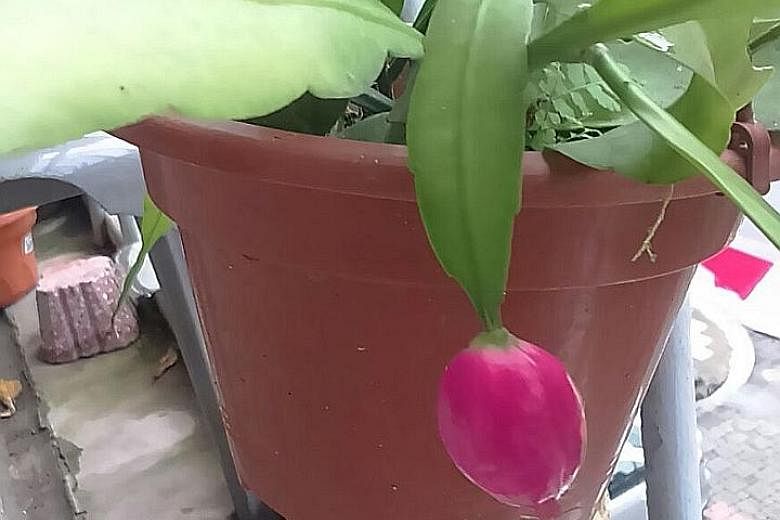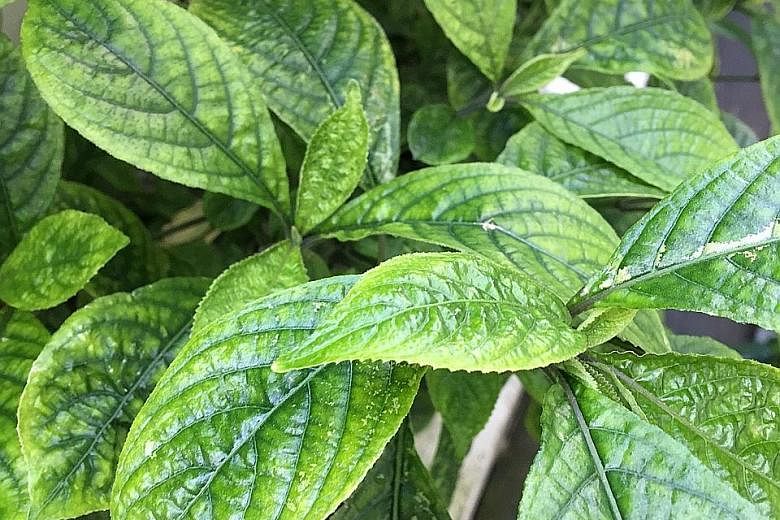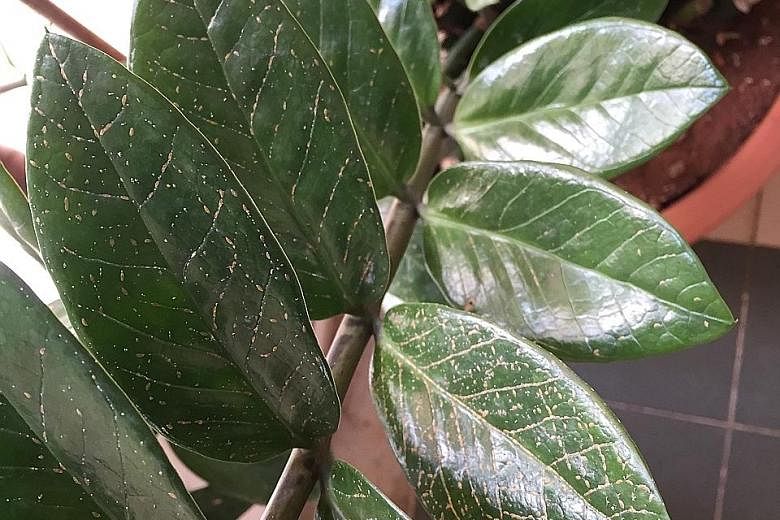Princess Epiphyllum is related to Queen of the Night
What is the pink growth on my plant?
Davinia Wong
The plant you have is botanically known as Epiphyllum pumilum or goes by its common name, Princess Epiphyllum. Its flowers are scented, produced in profusion and remain open during the day.
This species is closely related to Queen of the Night (Epiphyllum oxypetalum), though the Epiphyllum pumilum has smaller flowers. The pink ball, produced at the end of the flattened stem, is its fruit.
Black Face General is often used in folk medicine
Is this the plant that is used to make grass jelly?
Adeline Leong
The plant you have is not the Chinese Grass Jelly Plant. Instead, this shrub's correct botanical name is Strobilanthes crispus. It goes by common names such as Black Face General, Pecah Batu, Batu Jin and Keci Beling.
It is often used in folk medicine to treat various types of cancer and diabetes. Consult a medical practitioner before consuming this plant.
Various plants are used to make grass jelly.
The Chinese black grass jelly is made from the creeping plant called Platostoma palustre. The Indonesian green grass jelly is made from the vine known as Cyclea barbata.
Redbird Flower has poisonous, milky sap
What is this plant? It has crooked stems.
Sharon Wee
The plant you have is botanically known as Euphorbia tithymaloides. Its common names include Redbird Flower, Devil's Backbone and Jacob's Ladder.
This drought-tolerant plant grows best under sunny conditions and in well-drained soil. It has a poisonous, milky sap. Do not drink the sap or allow it to touch your mouth's mucous membrane, skin or eyes.
Peace Lily sap and tissues can cause irritation
What is the name of this plant and is it poisonous?
Leong Kum Hong
This plant is commonly known as the Peace Lily. Its botanical name is Spathiphyllum wallisii and it is a member of the Arum family (Araceae). Admired for its upright inflorescences that feature a white, sail-like spathe, this houseplant is shade-tolerant.
Other houseplants such as the money plant (Epipremnum aureum) and edible crops such as the common yam (Colocasia esculenta) belong to this family. They are all known to have minute calcium oxalate crystals in their sap and tissues.
When this substance comes into contact with skin or sensitive areas such as the eyes and mouth, it can cause irritation. It is best to move the plant out of reach of children.
ZZ Plant needs four to six hours of filtered sunlight
The leaves of my plant are covered in brown spots. At first, only one leaf had the spots, but it has since spread to the other leaves. The plant is in the corridor where it gets bright daylight all day. Once a week, I pour lots of water over the plant. Some of the water flows out through holes at the bottom of the pot.
Chew Chwee Peng
Your ZZ Plant (its botanical name is Zamioculcas zamiifolia) is infested with scale insects. It needs better light conditions and its leaves should be periodically cleaned to remove dust.
Although the ZZ Plant is touted as a shade-tolerant houseplant, it does better when grown in a location where it can be exposed to four to six hours of filtered sunlight.
Use a soft toothbrush to remove the scale insects. Then spray the foliage with either neem oil or summer oil, which suffocates the pests.
When making the oil-based pesticide solution, follow the label's instructions or make a more diluted solution, so that the foliage is not harmed.
Repeated applications are often required to keep the pest populations low and manageable. It is best to apply such pesticides during the cooler parts of the day, such as in the evening.
•Answers by Dr Wilson Wong, a certified practising horticulturist and founder of Green Culture Singapore (www.greenculturesg.com). He is also an NParks-certified park manager.
• Have a gardening query? E-mail it with clear, high-resolution pictures of at least 1MB, if any, and your full name to stlife@sph.com.sg






